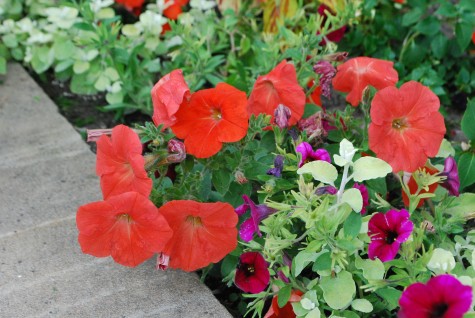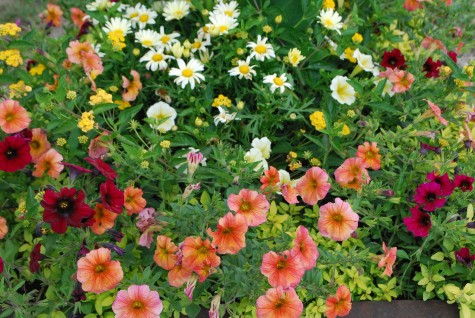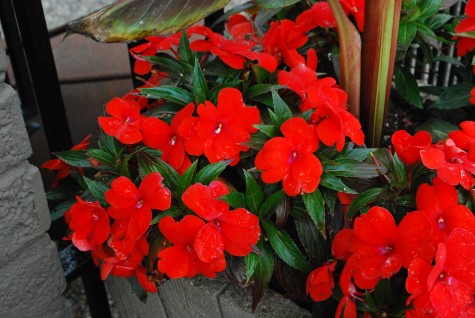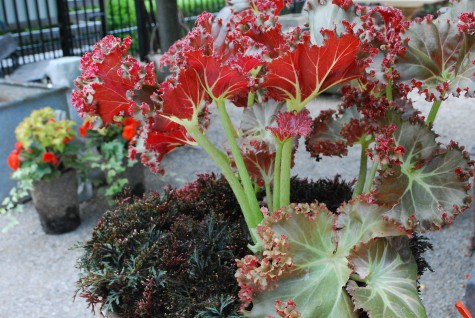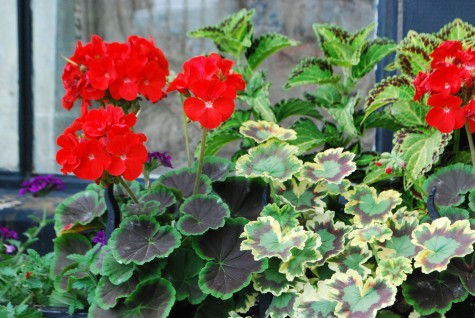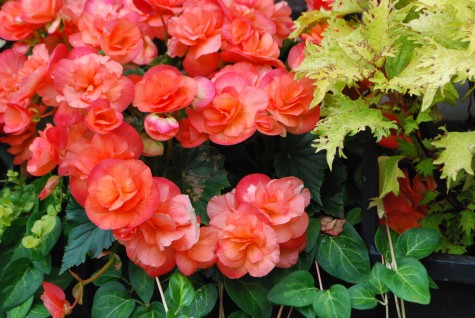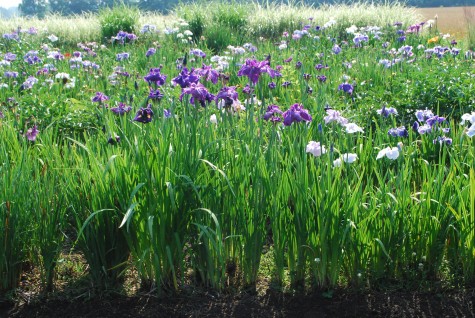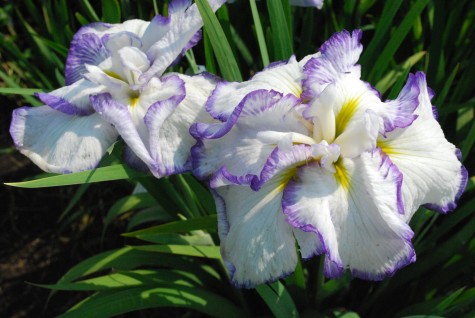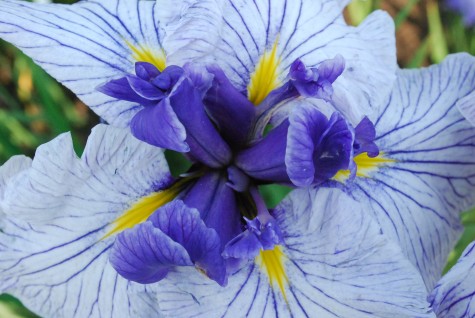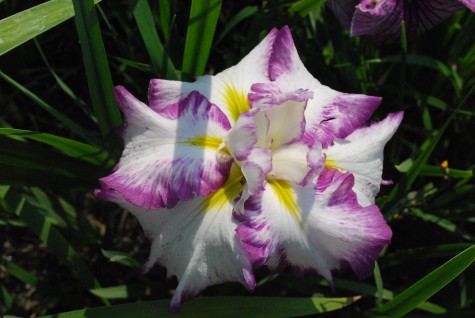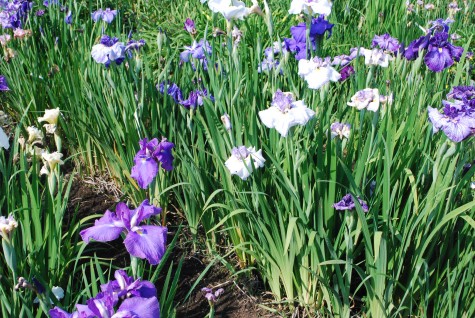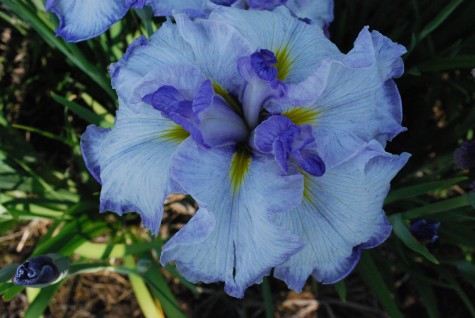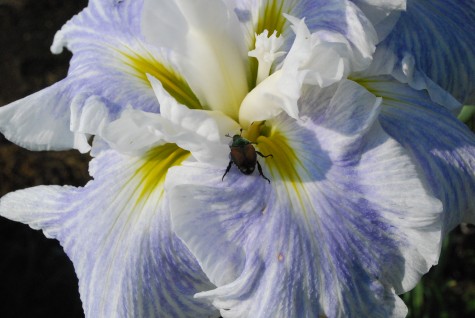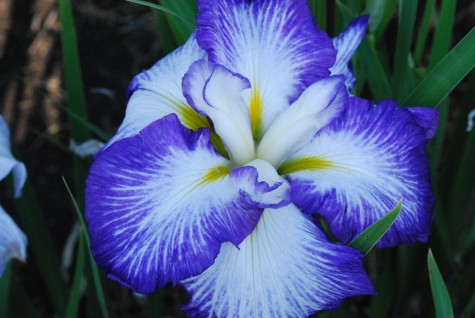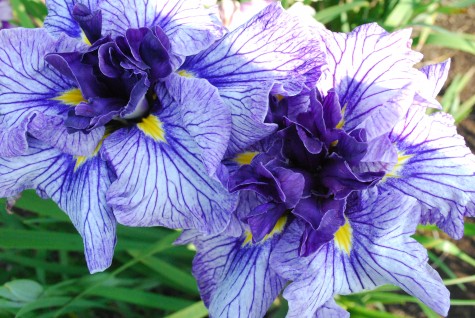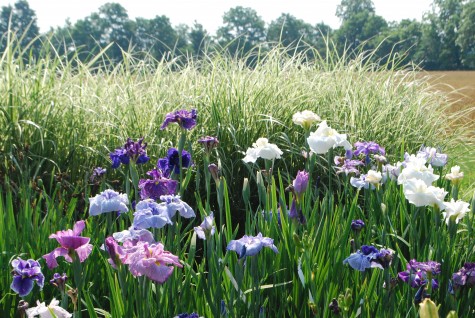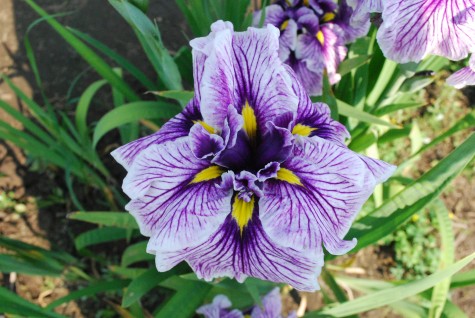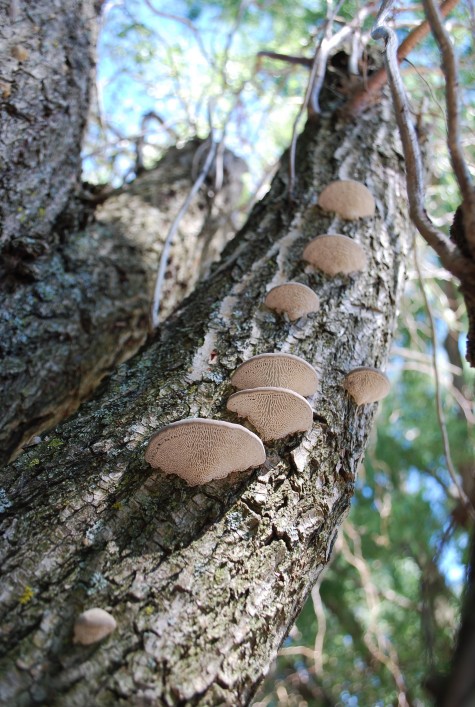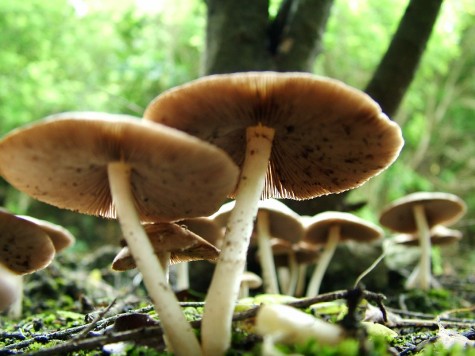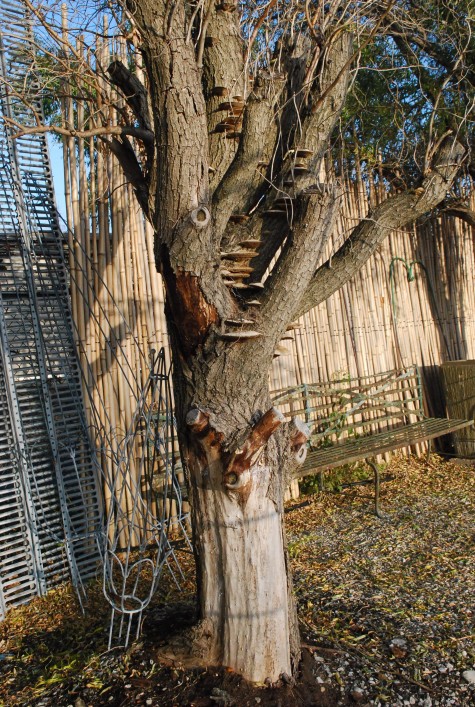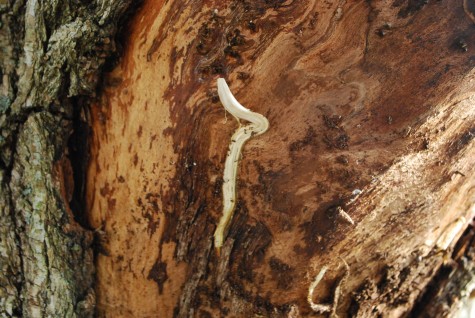 Faiencerie Figueres & Fils is a shop in Marseilles France well known to us. Rob has been buying their glazed ceramic creations for a good many years. It is a but one of countless small creative businesses that exist all over the planet. It is a very small family owned business. They work very hard, producing objects of great beauty. We happen to love their plates and bowls of fruits and vegetables. They create sculpture from a love and appreciation from the bounty of nature.
Faiencerie Figueres & Fils is a shop in Marseilles France well known to us. Rob has been buying their glazed ceramic creations for a good many years. It is a but one of countless small creative businesses that exist all over the planet. It is a very small family owned business. They work very hard, producing objects of great beauty. We happen to love their plates and bowls of fruits and vegetables. They create sculpture from a love and appreciation from the bounty of nature.
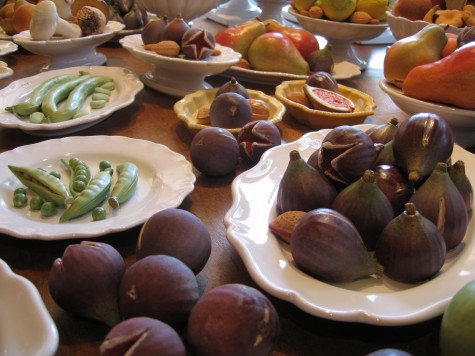 Their enterprise began in the 1950’s-the brainchild and passion of the Figueres family. I will admit to a fondness for this particular vintage. Beyond the family business, Gilberte Figueres has herself spent a lifetime creating and painting china in the tradition of the Vieux Marseilles faience. She and her husband, and their children, to whom they refer with great affection, as the rookies, have made a life from their art. The first time Rob shopped with them, they insisted on a proper introduction. To the family, and only then, to the business.
Their enterprise began in the 1950’s-the brainchild and passion of the Figueres family. I will admit to a fondness for this particular vintage. Beyond the family business, Gilberte Figueres has herself spent a lifetime creating and painting china in the tradition of the Vieux Marseilles faience. She and her husband, and their children, to whom they refer with great affection, as the rookies, have made a life from their art. The first time Rob shopped with them, they insisted on a proper introduction. To the family, and only then, to the business.
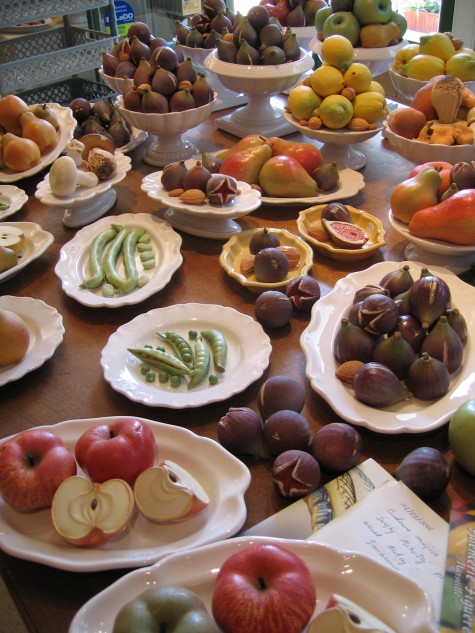 The fruits and the vegetables of Provence inspire their work. I remember from so many years ago Rob explaining that each piece is cast, and bisque fired. The glazes are clear when applied. So how would they know the application of a glaze or group of glazes that would transform a bisque fig perfectly into a convincingly colored fig? I have no real need to know; I love the magical quality of their work.
The fruits and the vegetables of Provence inspire their work. I remember from so many years ago Rob explaining that each piece is cast, and bisque fired. The glazes are clear when applied. So how would they know the application of a glaze or group of glazes that would transform a bisque fig perfectly into a convincingly colored fig? I have no real need to know; I love the magical quality of their work.
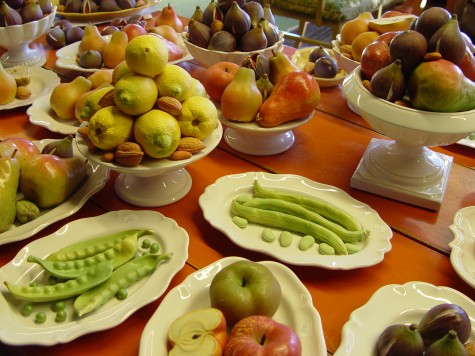 There are the plates. Usually white. There may be peas applied to that plate, or mushrooms, or apples-some whole, some cut. The plates can be hung on a wall. The footed dishes are piled high with fruits, nuts, figs, pears, apples, lemons. The day all of these sculptures arrived and got unpacked-a good day. From balls of clay they fashion the individual figs-some whole, some ripe and split open.
There are the plates. Usually white. There may be peas applied to that plate, or mushrooms, or apples-some whole, some cut. The plates can be hung on a wall. The footed dishes are piled high with fruits, nuts, figs, pears, apples, lemons. The day all of these sculptures arrived and got unpacked-a good day. From balls of clay they fashion the individual figs-some whole, some ripe and split open.
 I made a home for these extraordinarily beautiful sculptures-why wouldn’t I? They come from a place very unlike where I live. There is a very different life, a very different aesthetic at work. No matter what seems strange; I have no problem letting go of that. There is a common thread. A local person with passion and direction -I recognize what looks like passion from a long ways away, just as easily as I recognize it next door.
I made a home for these extraordinarily beautiful sculptures-why wouldn’t I? They come from a place very unlike where I live. There is a very different life, a very different aesthetic at work. No matter what seems strange; I have no problem letting go of that. There is a common thread. A local person with passion and direction -I recognize what looks like passion from a long ways away, just as easily as I recognize it next door.
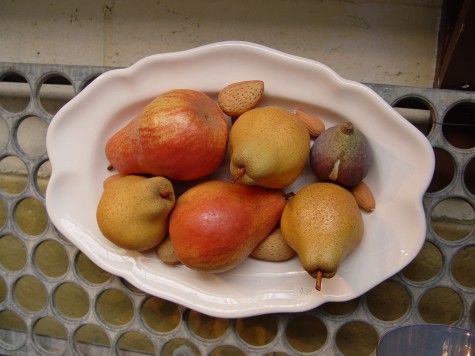 This arrangement of pears is a pretty quiet affair. Should I take or have the time to focus on it, I am taken with the spots, the lumps, the bruises, and the splits. Anyone who gardens recognizes the blush of the summer sun, the spots characteristic of a given variety, the ripe fruit splitting, the bruises or blemishes from bugs or hail-all those signs of life.
This arrangement of pears is a pretty quiet affair. Should I take or have the time to focus on it, I am taken with the spots, the lumps, the bruises, and the splits. Anyone who gardens recognizes the blush of the summer sun, the spots characteristic of a given variety, the ripe fruit splitting, the bruises or blemishes from bugs or hail-all those signs of life.
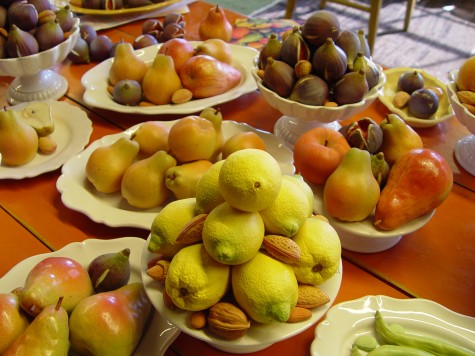 The signs of life-they are many. I could read every day about the production of fruit, and in the end, not know much more about it than what I see here.
The signs of life-they are many. I could read every day about the production of fruit, and in the end, not know much more about it than what I see here.
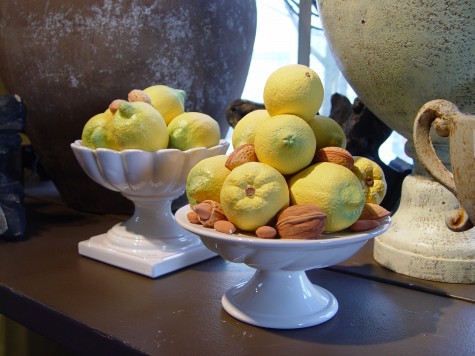 I have very few of these beautiful sculptures left. I am not surprised. They appeal to me in the same way as hand made Italian terra cotta, or handmade shutters or window boxes. Once these sculptures are gone, I will be longing to have them again. Never anywhere else have I seen anything quite like them. This is a wordy way of saying genuinely felt and hand made objects catch my eye. The evidence of the human hand interests me.
I have very few of these beautiful sculptures left. I am not surprised. They appeal to me in the same way as hand made Italian terra cotta, or handmade shutters or window boxes. Once these sculptures are gone, I will be longing to have them again. Never anywhere else have I seen anything quite like them. This is a wordy way of saying genuinely felt and hand made objects catch my eye. The evidence of the human hand interests me.
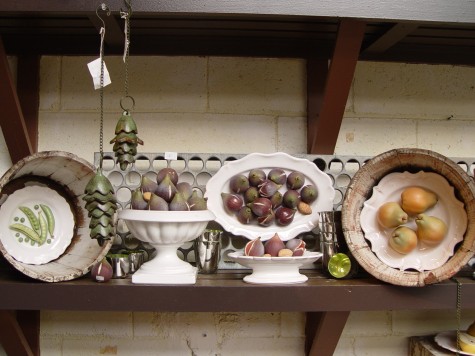
The big idea here? Handmade counts for so much. Your handmade-as in the Christmas jam, the holiday letters, the package wrap, the Sunday dinners, the vegetable patch, the paintings and sculptures, the landscape and garden design-I am likely to pay close attention. Handmade is the real work of a particular pair of hands. I like whenever possible to recognize and support talented people. Handmade-you are looking at it. Read for yourself. www.faiencerie-figuere.com. Let me know what you think.
